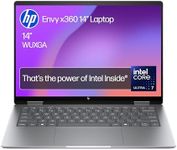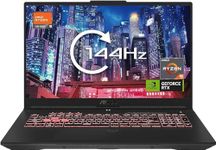Buying Guide for the Best High Performance Laptops
When choosing a high-performance laptop, it's essential to consider what tasks you'll be using it for, such as gaming, video editing, or software development. High-performance laptops are designed to handle demanding applications and multitasking with ease. To find the best fit for you, focus on the specifications that align with your primary use cases. Understanding these key specifications will help you make an informed decision and ensure that your laptop meets your performance needs.Processor (CPU)The processor, or CPU, is the brain of your laptop, responsible for executing instructions and running programs. A powerful CPU is crucial for high-performance tasks like gaming, video editing, and 3D rendering. CPUs are often categorized by their core count and clock speed. More cores and higher clock speeds generally mean better performance. For high-performance laptops, look for CPUs with at least 4 to 8 cores and clock speeds above 3.0 GHz. If you're into heavy multitasking or running demanding applications, opt for a CPU with more cores and higher speeds.
Graphics Card (GPU)The graphics card, or GPU, handles rendering images, videos, and animations. It's especially important for gaming, video editing, and graphic design. GPUs are divided into integrated and dedicated types. Integrated GPUs share resources with the CPU, while dedicated GPUs have their own memory and processing power, offering superior performance. For high-performance needs, a dedicated GPU is recommended. Look for models with at least 4GB of VRAM for moderate tasks, and 6GB or more for intensive gaming or professional graphic work.
RAMRAM, or Random Access Memory, is where your laptop stores data that is actively being used or processed. More RAM allows for smoother multitasking and faster access to data. High-performance laptops typically require at least 16GB of RAM to handle demanding applications and multitasking efficiently. If you plan to run memory-intensive software or keep many applications open simultaneously, consider opting for 32GB or more.
StorageStorage determines how much data you can save on your laptop, including applications, files, and the operating system. High-performance laptops often use SSDs (Solid State Drives) for faster data access and boot times compared to traditional HDDs (Hard Disk Drives). For a balance of speed and capacity, consider a laptop with at least 512GB of SSD storage. If you work with large files or need extensive storage, look for models with 1TB or more, or consider a combination of SSD and HDD.
DisplayThe display is crucial for your visual experience, especially if you're using your laptop for gaming, design, or media consumption. Key factors include resolution, refresh rate, and color accuracy. A higher resolution, like 1920x1080 (Full HD) or 2560x1440 (QHD), provides sharper images. A refresh rate of 120Hz or higher is beneficial for smooth gaming and video playback. For color-sensitive work, look for displays with high color accuracy and coverage of color spaces like sRGB or AdobeRGB.
Battery LifeBattery life indicates how long your laptop can run on a single charge. While high-performance laptops often prioritize power over battery life, it's still an important consideration if you need portability. Battery life can vary widely based on usage, so consider your typical use case. If you need to work on the go without frequent charging, look for laptops with at least 6-8 hours of battery life. Keep in mind that more powerful components may reduce battery life.
Cooling SystemThe cooling system in a laptop is essential for maintaining performance and preventing overheating, especially during intensive tasks. High-performance laptops generate more heat, so an efficient cooling system is crucial. Look for laptops with advanced cooling technologies, such as multiple fans or vapor chamber cooling. If you plan to use your laptop for extended periods of heavy use, ensure it has a robust cooling system to maintain performance and longevity.















